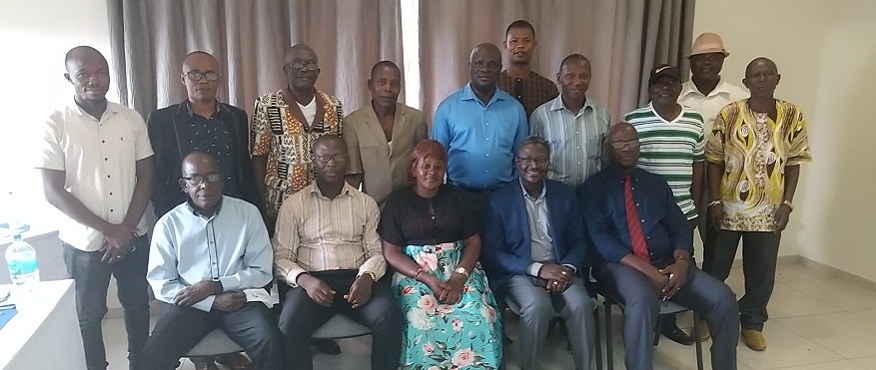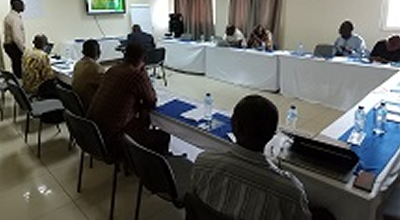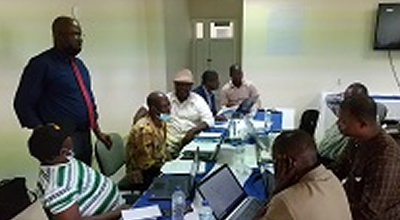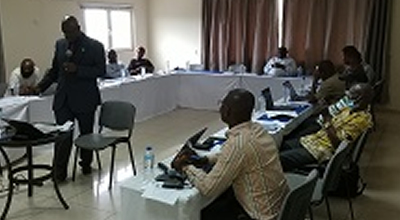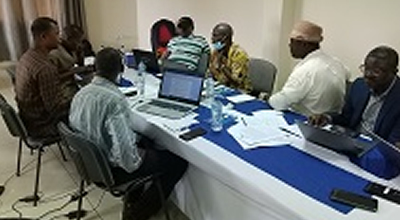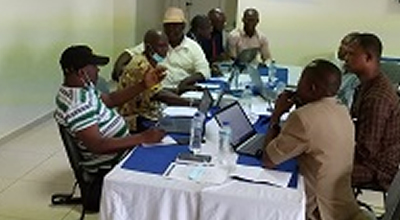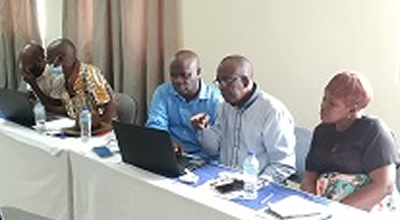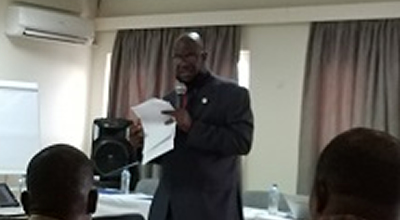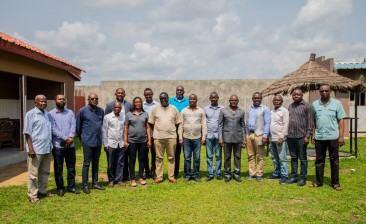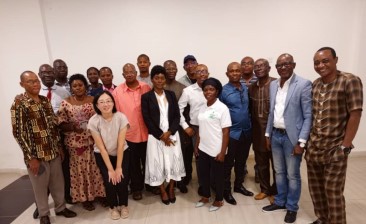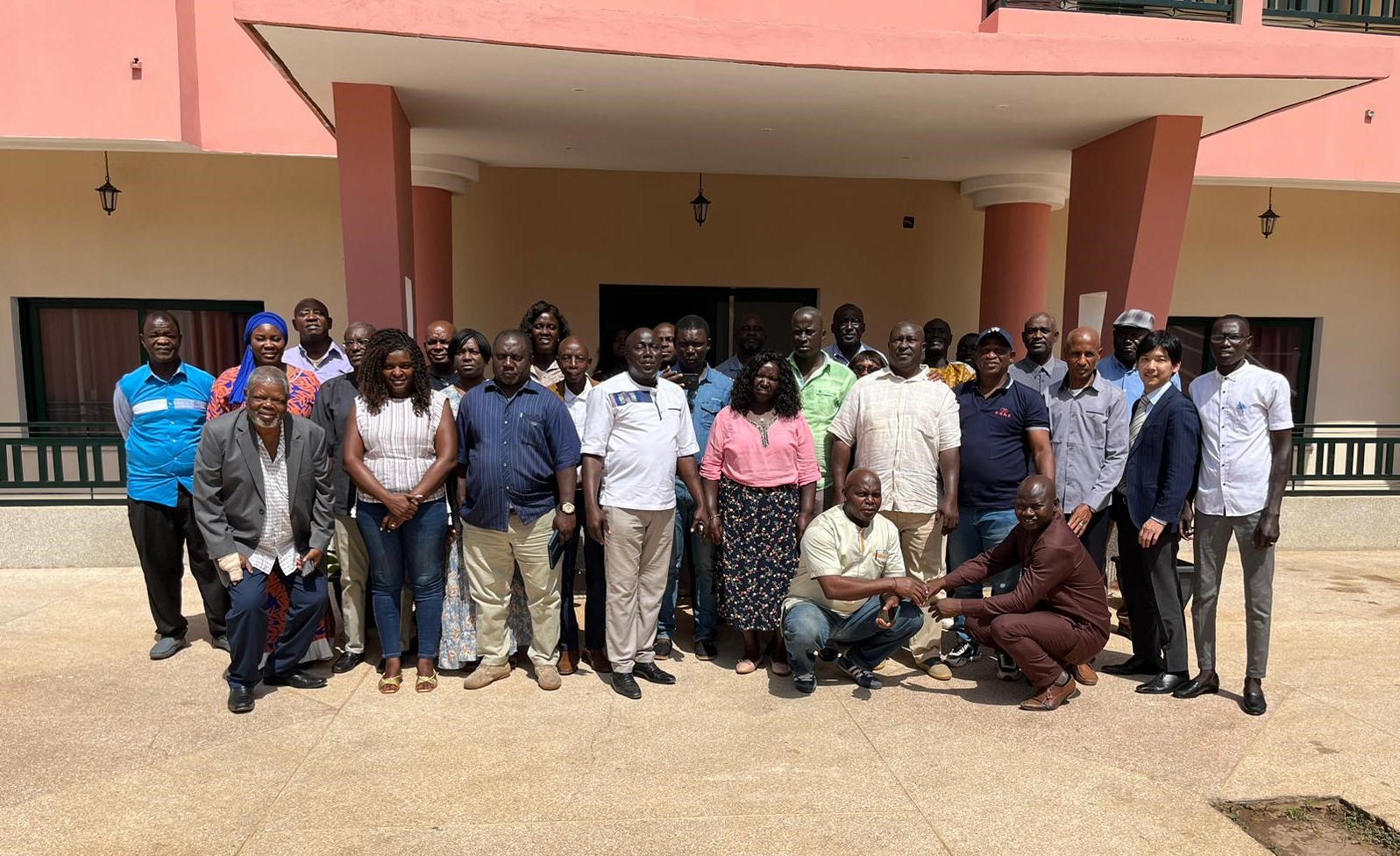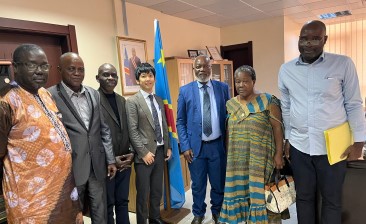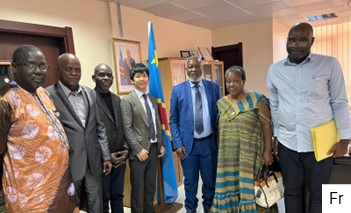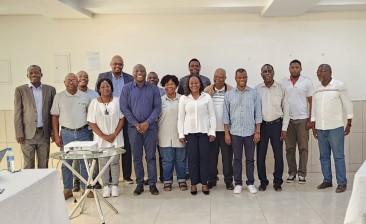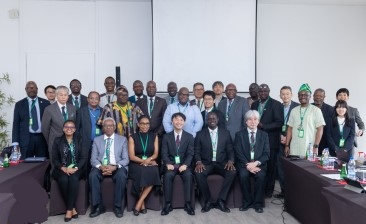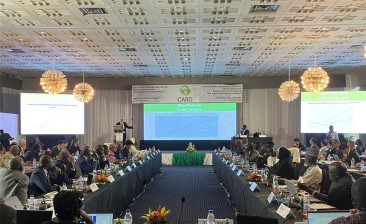Sierra Leone, November 2021
National Rice Development Strategy of Sierra Leone
The working week for revising/updating the Sierra Leone Rice Value Chain Development Strategy (SLRVCDS) was held in the conference hall of New Brookfields Hotel, Freetown, between 29th November and 3rd December 2021. The SLRVCDS was developed by the Sierra Leone government in 2019. This working week was aimed at improving the contents of the SLRVCDS, by adding to the document information and analysis to further clarify the pathways that could lead to the development of the country’s rice sector. The Task Force team was composed of 21 experts in the various segments of the rice value chain, drawn from the public sector, research institutes, private sector, and farmer’s union.
In his good will message, the Minister of Agriculture represented by the Deputy Chief Agriculture Officer pointed out that rice is a staple food crop of the Sierra Leoneans and that currently the government was expending so much of the scarce resources to supplement the gap created by production deficit, through importing rice. According to him, the government will always welcome any collaboration in the development of the rice sector. Then, the NRDS Focal Point (FP) explained in his presentation that since the NRDS1 expired in 2018, the government developed the SLRVCDS in order not to halt the progress made in the rice sector. He explained that the current exercise to revise/update the document to further align with government current vision for the development of the rice sector cannot be overemphasized.
During the working week, the Task Force members were divided into four groups for discussing the following subjects: (1) seed sector development; (2) production and mechanization; (3) processing and marketing; and (4) finance. For each subject, the challenges and priority interventions were identified. At the end of the group work, a plenary session was held to harmonize the results of group discussions. The participants also discussed application of RICE approach adopted for CARD phase 2 (Resilience, Industrialization, Competitiveness and Empowerment).
Key outputs/Results
The following outputs were realized from the discussions:
To realize the objective of the SLRVCDS, which is to achieve rice self-sufficiency by 2030, four policy clusters will be pursued, namely: i) increase rice production and productivity; ii) establish staple crops processing zones; iii) increase market opportunities for producers; and iv) implement and coordinate the rice self-sufficiency policy.
Production target for achieving rice self-sufficiency was set at 2.76MMT. Investments will be concentrated in the low land ecology in order to develop irrigation facilities in the inland valley swamps (IVS). Eight improved varieties of seeds will be promoted. Mechanization development under PPP will be given priority attention and pursued.
Critical investment areas were proposed as follows:
- Strengthening of infrastructures and human capacities of Sierra Leon Agricultural Research Institute (SLARI) to maintain the genetic purity and nucleus seed production of commercial released varieties and breeding resilient varieties
- Promotion/enhancement of small holder community-based seed production
- Strengthening of market linkages between seed companies and end users
- Strengthening of market data collection and information dissemination for effective planning
- Establishments of medium- and large-scale rice mills in rice hubs under PPP to achieve the cost reduction in the milling and improve competitiveness of the local rice
- Development of the inland valley swamps to enhance irrigation activities
- Promotion of mechanization under PPP arrangement
- Capacity building of smallholder farmers on good agricultural practices (GAP) to produce quality paddy that can be up take by the private mills
Through this working week, the SLRVCDS was revised and updated, and the Task Force decided to change its name to National Rice Development Strategy 2 (NRDS2), to align with other CARD member countries. Upon completion of the draft, the NRDS2 will be shared among technical team members for comments. Once the comments will be incorporated, the FP will initiate ministerial approval after which a validation workshop will be organized among wider stakeholders.
